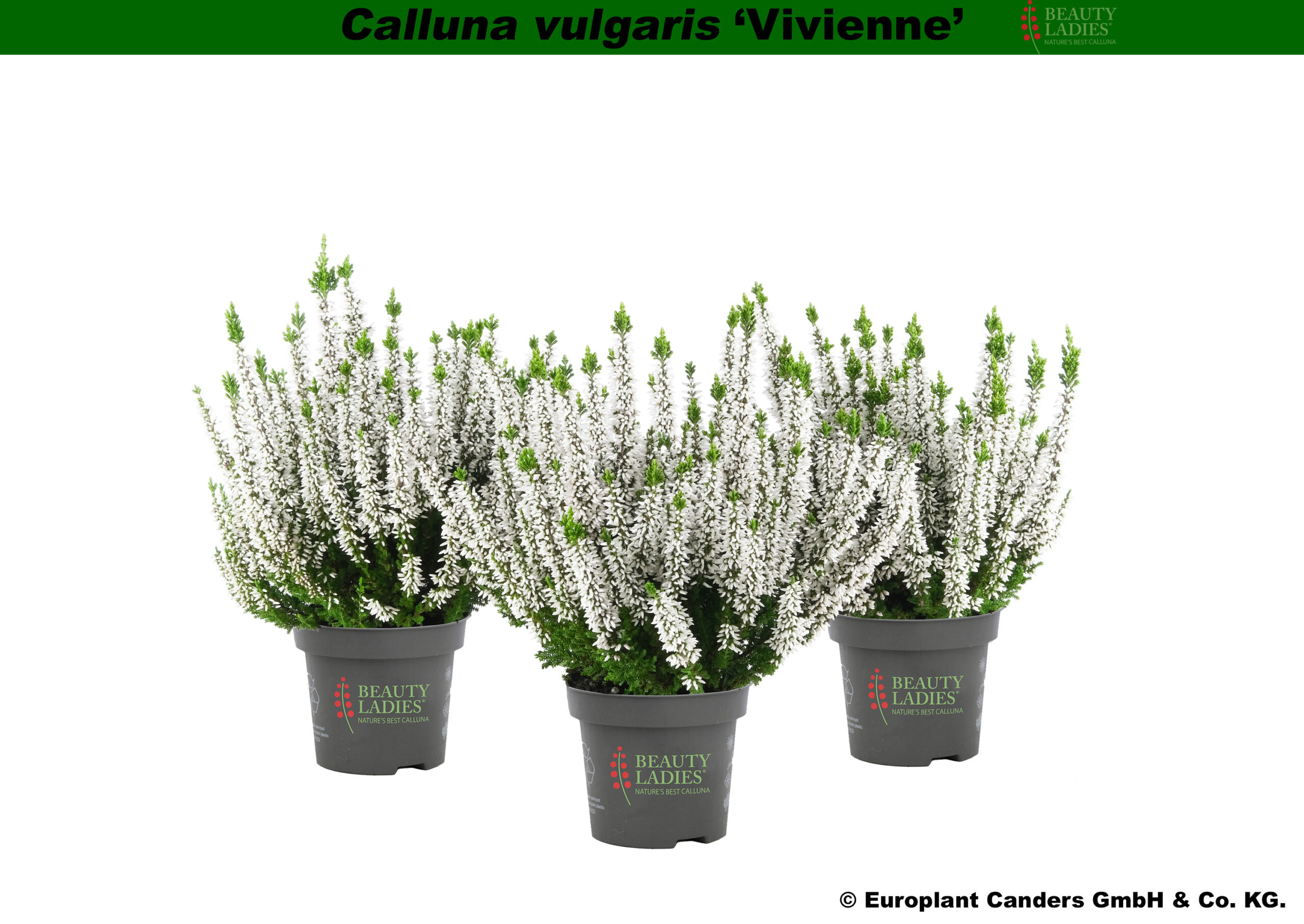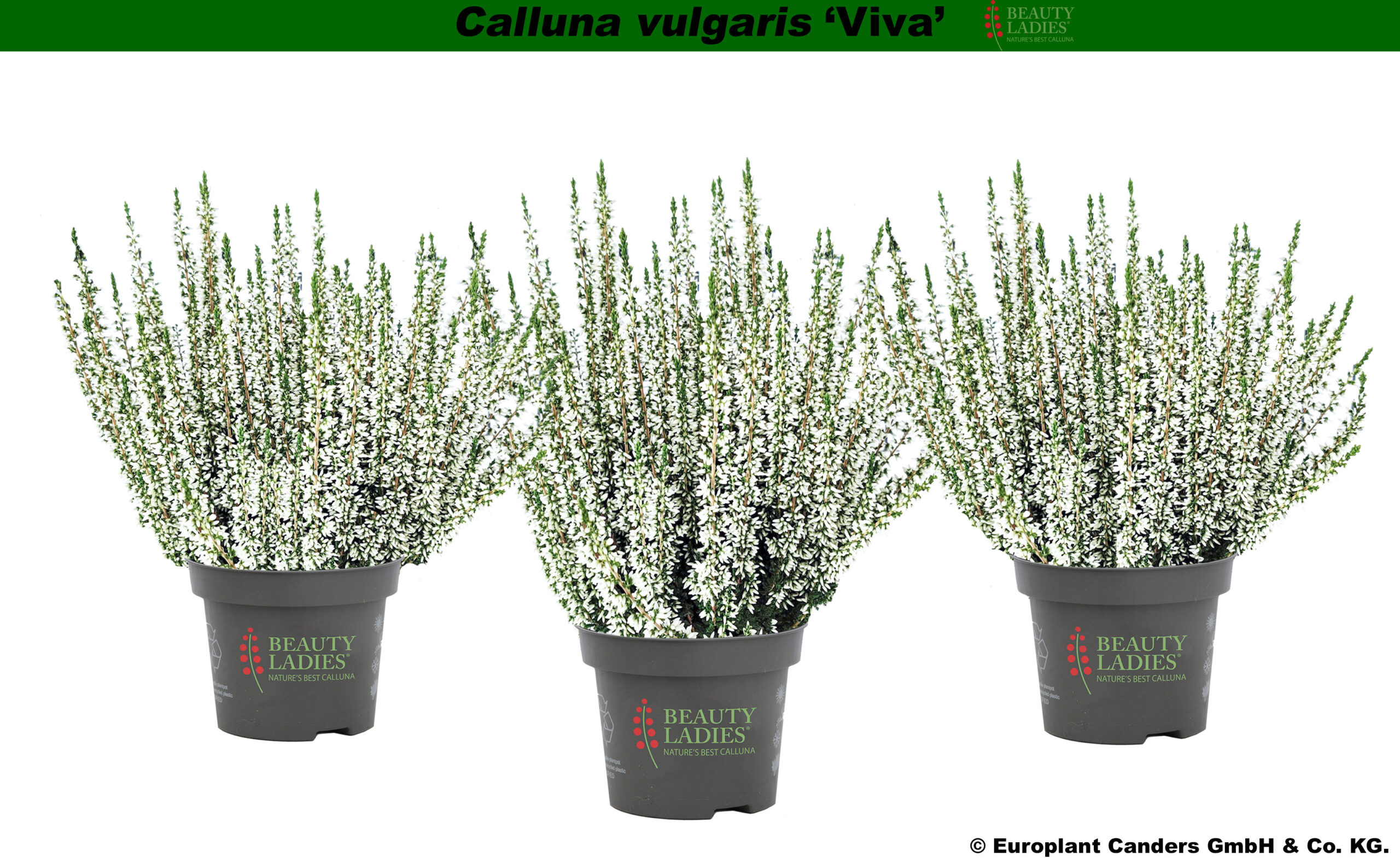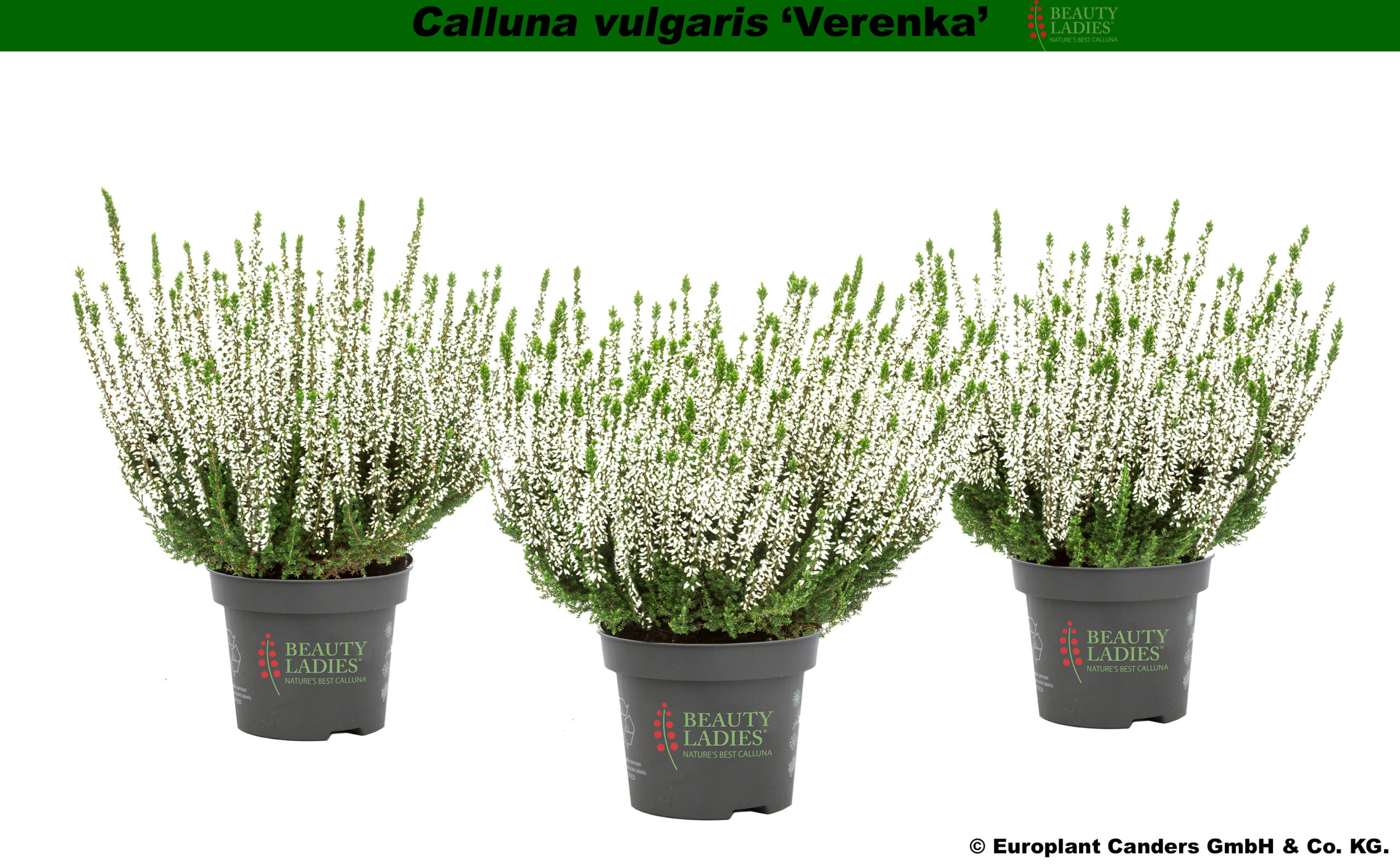♤ Dense white buds; IX-XI; habit upright.
Europlant Canders GmbH/ Eden’s Creations B.V.: Beauty Ladies series.
Marketed under the name Calluna vulgaris ‘Verenka’
Recorded by Edens Creations B.V, Zuiderzeestraatweg 410, 8091 PB Wezep, Netherlands. 20.10.2008. CPVO 6.2008 15/12/2008.
Edens Creations B.V, EU PBR given on 06.06.2011. CPVO 4.2011 15/08/2011



